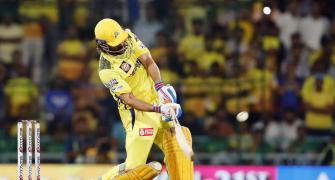Old age comes with its own share of problems. As a person grows older, and his regular source of income dries up, his dependency on others can increase significantly. With health care expenses on the rise and little social security, living the golden years respectfully can be quite a challenge for senior citizens. In such a scenario, a regular income stream that can help them meet their financial needs and maintain their current living standards becomes important.
One typical feature with most senior citizens is that their residential property accounts for a significant portion of their total asset pie. And, given its illiquid nature, property fails to aid senior citizens on the liquidity front.
In the Union Budget 2007-08, a proposal to introduce 'Reverse Mortgages' was put forth. To understand the concept of reverse mortgage, first let us understand what a regular mortgage is. In a regular mortgage, a borrower mortgages his new/existing house with the lender in return for the loan amount (which in turn he uses to finance the property); the same is charged at a particular interest rate and runs over a predetermined tenure.
The borrower then has to repay the loan amount in the form of EMIs (equated monthly installments), which comprise of both principal and interest amounts. The property is utilised as a security to cover the risk of default on the borrower's part.
In the reverse mortgage, senior citizens (borrowers), who own a house property, but do not have regular income, can mortgage the same with the lender (a scheduled bank or a housing finance company-HFC). In return, the lender makes periodic payment to the borrowers during their lifetime.
In spite of mortgaging the house property, the borrower can continue to stay in it during his entire life span and continue to receive regular flows of income from the lender as well. Also, since the borrower doesn't have to service the loan, he need not bother about repaying the 'borrowed amount' to the lender.
The concept of reverse mortgage, although new in India, is very popular in countries like the United States. Recently, National Housing Bank, a subsidiary of the Reserve Bank of India, released draft norms of reverse mortgage (the final guidelines are awaited). Following are some of the key features of the scheme from the draft norms.
As per the norms, a house owner who has crossed 60 years of age is eligible to seek a loan of upto 60 per cent of the value of residential property by mortgaging the same (for the maximum period of 15 years) with a bank/HFC, while retaining the right to stay in the property. The borrower i.e. house owner is not required to pay back the loan amount.
In terms of receiving the loan amount, the borrower can opt for monthly, quarterly, annual or lump sum payments or payments at any other point in time as per his discretion. Also, a revaluation of the property has to be under taken by the bank/HFC once every 5 years.
Consequent to the revaluation, necessary changes will be made to the loan amount. However, the bank/HFC will have the discretion to decide the mode of payment of loan and to determine the tenure of the loan, depending on factors like the state and market value of the property and age of the borrower, among others.
The borrower can use the loan amount for various purposes like renovation and extension of the residential property, maintenance/insurance of the residential property and family's medical or emergency expenditure, among others. However, the loan amount cannot be used for any speculative or trading purposes.
The interest rate on the reverse mortgage will be determined by the bank/HFC based on the risk perception and loan pricing policy, among others. Fixed and floating rate of interest may be offered, subject to a transparent disclosure of the terms and conditions to the borrower.
The lender will recover the loan along with the accumulated interest by selling the house after the death of the borrower or earlier, if the borrower leaves the mortgaged residential property permanently. Any excess amount will be remitted back to the borrower or his heirs.
However, before resorting to sale of the house, preference will be given to the owner or his heirs to repay or prepay the loan amount, along with the interest, and to get the mortgaged property released.
The amount received through reverse mortgage is considered as loan and not income; hence the same will not attract any tax liability.
As the cliched saying goes, "there are no free lunches in life". In case of reverse mortgage, there exist a few guidelines, which may not 'appeal' to the house property owner i.e. the borrower.
As per the guidelines, the maximum loan tenure can be 15 years. So, if the borrower outlives the loan tenure, he can continue to stay in the house. However he will no longer be eligible for any payments from the bank/HFC.
The bank/HFC shall have the option to revise the periodic/lump sum amount at such frequency or intervals based on revaluation of property, or at least once every 5 years. The borrower will be provided the option to accept the revised terms and conditions to continue the loan.
However, if he refuses to accept the revised terms and conditions, no further payments shall be made by the bank/HFC. Interest at the rate agreed before the review will continue to accrue on the outstanding loan amount.
Since the reverse mortgage can be either at fixed or floating rates, it will be prone to the interest rate movements. Hence, in the scenario when interest rates are moving northwards, a floating rate reverse mortgage would add to the borrower's liability.
Under the reverse mortgage, the legal heirs of the owner are not entitled to take control over the mortgaged property upto the extent of the outstanding loan. They are required to first repay the outstanding loan amount along with the interest to stake a claim on the property.
The banks/HFCs at their discretion may levy penalty or other charges on the prepayment of loan. So, if the borrower or his heirs wish to prepay the loan amount, they may have to bear an additional cost.
The most important advantage offered by the reverse mortgage scheme is that despite mortgaging the house, the house owner retains its ownership, is entitled to live in the same throughout his lifetime and also has access to a regular income stream, which can help meet his day-to-day needs.
From the bank's/HFC's perspective, the mortgage on the property in its favour ensures that there is no scope for default.
Having said that, individuals who wish to opt for the reverse mortgage scheme would do well to acquaint themselves with the nitty-gritties of the guidelines. Also, the final guidelines will aid in providing more clarity to individuals who wish to participate in the reverse mortgage scheme.
By Personalfn.com, a financial planning initiative.
Your search for an honest financial planner ends here. Read on







